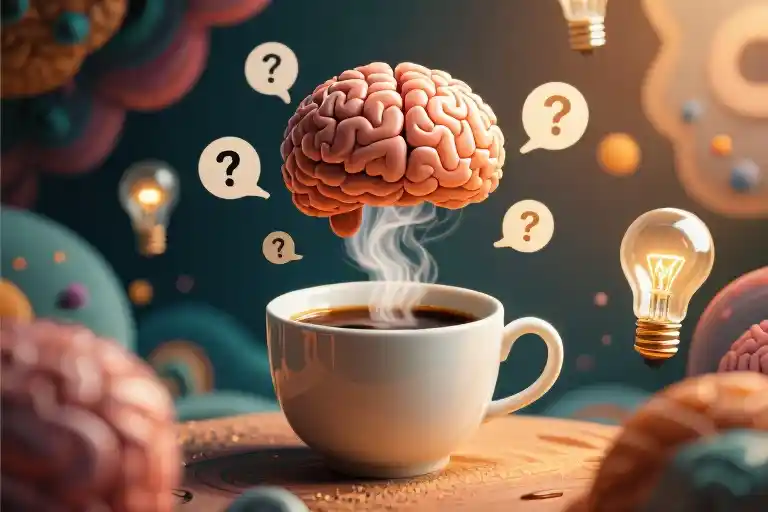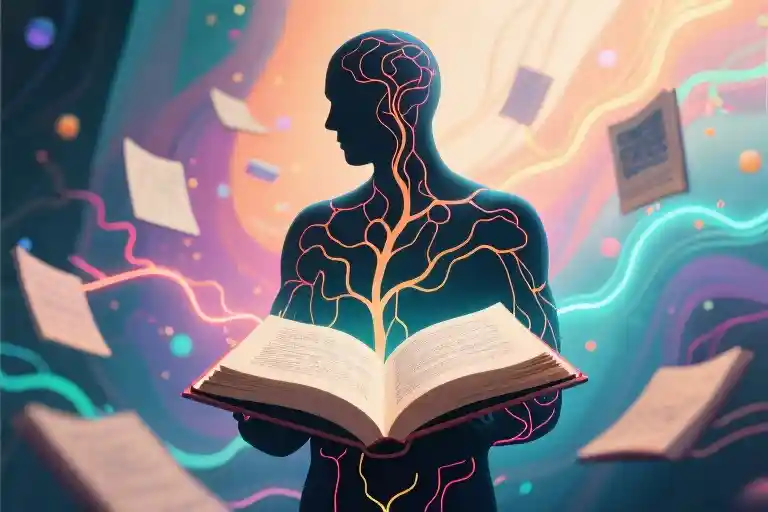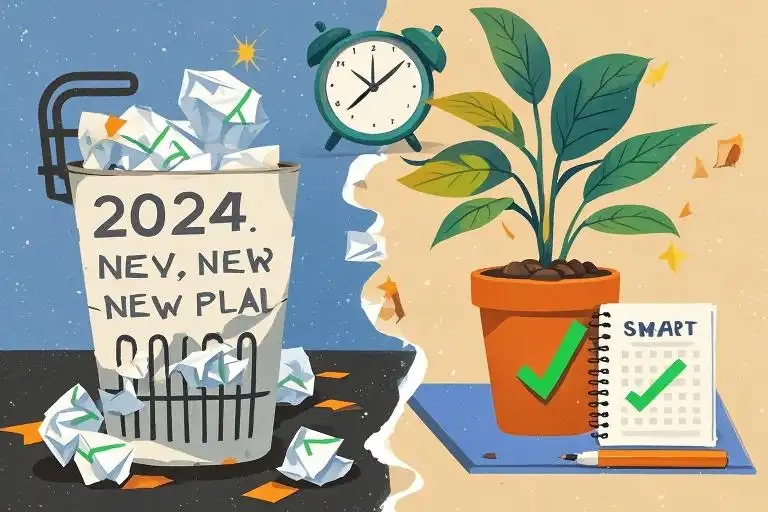The other day at my local coffee shop, I witnessed something that perfectly captures how easily we accept absurd ideas. A man in a tweed jacket (always suspicious) was lecturing his friend about how left-handed people are statistically more likely to commit crimes. He delivered this nonsense with the confidence of a Nobel laureate, complete with made-up percentages and zero credible sources.
What fascinated me wasn’t his ridiculous claim – we’ve all heard wild theories before. It was how readily his friend nodded along, occasionally adding “That makes sense” between sips of oat milk latte. Neither demanded evidence nor questioned the logic. The theory simply sounded plausible enough, delivered confidently enough, to bypass critical thinking entirely.
This scene illustrates our brain’s three sneaky tricks that make us believe nonsense:
- Confirmation bias – We favor information confirming our existing beliefs (if you distrust lefties, this “statistic” feels true)
- Cognitive dissonance – We’ll defend absurd positions to avoid admitting we’re wrong
- Authority illusion – Confidence often masquerades as expertise
Over the next sections, we’ll explore:
- Why your brain prefers comfortable lies over uncomfortable truths
- How marketers and conspiracy theorists exploit these mental shortcuts
- Practical ways to catch yourself falling for psychological traps
That coffee shop encounter could’ve been about astrology, political claims, or diet fads – the pattern remains identical. When we stop examining why we believe what we believe, we become walking confirmation bias machines. And as we’ll see next, sometimes we’ll even defend terrible concert experiences just because we suffered for them…
The Absurd Theater: Lies You Believe Every Day
We’ve all been there – sitting in a cafe, sipping our artisanal coffee (that costs more than our first car payment), when we overhear someone confidently spouting absolute nonsense. Like the time I heard a man passionately arguing that left-handed people were genetically predisposed to criminal behavior.
He delivered his ‘theory’ with such conviction, complete with made-up statistics and zero evidence, that you’d think he was presenting a peer-reviewed study. What shocked me more? His friend nodding along like this was common knowledge. This wasn’t just harmless chatter – it was a perfect demonstration of how easily we accept information that aligns with our existing beliefs, regardless of truth.
The Confidence Con
What makes these absurd claims so believable isn’t their factual basis (there isn’t one), but the confidence with which they’re delivered. The cafe conspiracy theorist didn’t say “I think maybe…” or “Some studies suggest…” He stated his bizarre left-handed criminal theory as absolute fact. And that confidence? It’s contagious.
Our brains are wired to equate confidence with competence. It’s an evolutionary shortcut – in prehistoric times, following the most confident tribe member might have meant the difference between finding food or becoming food. But in today’s world of information overload, this wiring makes us vulnerable to all sorts of nonsense dressed up as truth.
The Concert That Wasn’t Worth It (But We’ll Never Admit)
Then there’s the phenomenon of justifying our poor decisions after the fact. Take my friend Sarah’s experience last summer. She camped out overnight for tickets to a legendary band’s reunion tour. She endured:
- 14 hours in line
- Questionable street food
- A stranger’s detailed analysis of every B-side track
When she finally saw the show? Underwhelming doesn’t begin to cover it. The lead singer forgot lyrics, the sound mixing was terrible, and the ‘special effects’ consisted of two disco balls.
But ask Sarah about it now? “Oh no, it was incredible! The raw energy! So worth the wait!”
This isn’t just stubbornness – it’s cognitive dissonance in action. After investing so much time, money, and emotional energy, admitting the concert was bad would create mental discomfort. So our brains perform this incredible gymnastics routine to convince us it was actually amazing.
Why We Fall for This
- Confirmation bias: We give weight to information that confirms what we already believe (like nodding along to that left-handed theory if we already distrust lefties).
- Social proof: If others seem to believe something (like the friend agreeing in the cafe), we’re more likely to accept it.
- Effort justification: The more we invest in something (time, money, emotion), the more we’ll convince ourselves it was worthwhile.
These mental shortcuts served us well when quick decisions meant survival. But in our complex modern world? They leave us vulnerable to everything from bad concert tickets to dangerous misinformation.
The first step to thinking more clearly is recognizing these patterns in ourselves. That moment when you find yourself vehemently defending something questionable? That’s your cue to pause and ask: “Am I believing this because it’s true, or because I want it to be true?”
Because the most dangerous lies aren’t the ones others tell us – they’re the ones we tell ourselves.
The Brain’s Magic Trick: Why You Defend Bad Choices
We’ve all been there. That moment when you catch yourself passionately defending a purchase you secretly regret, or nodding along to a friend’s questionable theory just because it feels right. Our brains have sophisticated defense mechanisms to protect us from uncomfortable truths, and understanding them is the first step to thinking more clearly.
When Your Brain Filters Reality
Social media platforms have turned confirmation bias into an art form. Those perfectly curated feeds showing only viewpoints you already agree with? That’s not coincidence – it’s your brain’s preference for comfort over truth at work. Studies show we’re 67% more likely to engage with content that aligns with our existing beliefs, even when algorithms aren’t involved.
Consider smartphone brand loyalty:
- Apple users dismissing Android’s customization options
- Android fans ignoring iPhone’s seamless ecosystem
This selective attention explains why political debates often go nowhere – we literally don’t hear opposing evidence. The scary part? We do this completely unconsciously about 200 times daily with everything from restaurant choices to career decisions.
The Mental Gymnastics of Cognitive Dissonance
Leon Festinger’s famous 1957 experiment revealed something startling: when reality clashes with our beliefs, we don’t change our beliefs – we rewrite reality. Participants paid $1 to lie about a boring task later convinced themselves it was actually interesting. Sound familiar?
This explains:
- Why we defend terrible concerts after waiting in line for tickets
- Why smokers develop elaborate rationalizations about health risks
- Why investors hold onto failing stocks, throwing good money after bad
Our brains treat psychological discomfort like physical pain – we’ll do anything to make it stop, even if that means believing obvious falsehoods. The greater the effort or sacrifice involved, the harder we’ll work to justify it afterward.
Breaking the Illusion
Spotting these mental shortcuts in yourself requires brutal honesty:
- The gut check – Does this belief make me feel superior or special?
- The mirror test – Would I accept this reasoning if it supported the opposite conclusion?
- The outsider view – What would I tell a friend in this situation?
Social media platforms amplify these biases by design. That viral post about “left-handed criminals” spreads not because it’s true, but because it’s interesting. Before sharing, ask:
- Is this confirming what I already think?
- Am I sharing because it’s true or because it feels good?
Remember: smart people aren’t immune to bad thinking. The difference is recognizing when your brain starts playing tricks on you.
The Skeptic’s Toolkit: 5 Questions to Debunk Pseudoscience
We’ve all been there – nodding along to someone’s passionately delivered “facts” that just feel… off. Like that cafe guy insisting left-handed people are criminals, or your aunt sharing miracle diet advice from Facebook. Our brains are wired to accept information that feels right, even when it’s demonstrably wrong. But with these five simple questions, you can train yourself to spot nonsense before it hijacks your reasoning.
Question 1: “Where’s the verifiable data?”
Let’s revisit our cafe conspiracy theorist. His dramatic claim about left-handed criminals falls apart with one simple challenge: “Can you show me the peer-reviewed studies?” Real statistics live in places like NIH databases or university research papers – not in someone’s animated coffee-fueled rant.
Pro tip: When someone says “studies show…”, ask which studies specifically. Legitimate researchers welcome scrutiny.
Question 2: “Who benefits if people believe this?”
That viral post claiming chocolate cures insomnia? Check who’s selling “medicinal cacao” in their bio. The supplement industry thrives on confirmation bias – we want to believe their products work, so we overlook missing clinical trials.
Question 3: “What would disprove this idea?”
Genuine science actively seeks disproof. If someone can’t imagine any evidence that would change their mind (like our left-handed crime theorist), that’s a red flag.
Question 4: “Am I emotionally invested in this being true?”
Remember the terrible concert you defended because you camped out for tickets? That’s cognitive dissonance at work. Notice when you want something to be true – it clouds judgment.
Question 5: “What do experts actually say?”
Not influencer “experts” – actual specialists. For health claims, check WHO statements. For psychological theories, consult APA resources. Expertise matters more than confidence.
Practice exercise: Next time you see a shocking statistic (“90% of people regret their careers!”), run it through these questions. You’ll quickly spot whether it’s wisdom… or just well-packaged nonsense.
Wrapping Up: How to Outsmart Your Own Brain
Let’s recap the three mental traps we’ve uncovered today:
- Confirmation Bias: That sneaky habit of only noticing information that agrees with what we already believe. Like when we ignore all negative reviews of a phone brand we’re emotionally attached to.
- Cognitive Dissonance: Our brain’s acrobatic ability to justify poor decisions after we’ve made them. Remember camping out for those concert tickets? The worse the experience, the harder we’ll convince ourselves it was “totally worth it.”
- Emotional Hijacking: When a claim makes us feel good (or confirms our worldview), we’re more likely to believe it without evidence – just like our cafe friend nodding along to the left-handed criminal theory.
Your Anti-Nonsense Toolkit
Next time someone hits you with a surprising claim (whether it’s a viral social media post or your uncle’s conspiracy theories at Thanksgiving), arm yourself with these 5 questions:
- “What’s the actual evidence?” (Pro tip: “Everyone knows” isn’t evidence)
- “Who benefits if people believe this?” (Follow the money trail)
- “Does this make me feel unusually excited/validated?” (Emotional reactions can cloud judgment)
- “What would change my mind?” (Real beliefs welcome counterarguments)
- “Is this claim too perfectly simple?” (Complex problems rarely have one-cause solutions)
Parting Thought
That confident cafe philosopher with his left-handed criminal theory? He’s everywhere – in comment sections, at family gatherings, sometimes even in our own heads. The difference is you’re now equipped to spot when confidence is disguising nonsense.
Final tip: When you hear something that sounds too good (or too outrageous) to be true, take a breath and run it through your 5-question filter. Your brain will try to trick you – but now you know how to trick it back.





